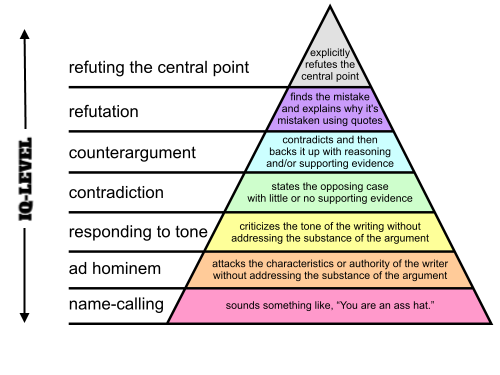Let's Talk
CONVERSATION PRACTICE IS ONE OF MY MOST POPULAR COURSES ON iTALKI. Many students book single lessons, while others book packages. In your lessons 80% of your time should be you, the student, carefully forming sentences with the teacher listening and talking less than 20% of the time. This will empower you and make you progress very quickly in your speaking skills.
Conversation is defined as a social exchange including at least two people communicating their thoughts and ideas. Almost every conversation includes five distinct stages: an opening, feedforward, main business, feedback, and closing. Openings are greetings which often combine verbal and non-verbal modes of communication. According to Functional Grammar, there are three levels to every utterance: the representational level, the presentational level, and the interactional level. The representational level is the literal content of your speech (for example, "It is cold today.") The presentational level pertains to what the discussion is about (in this case, Climate Change.) The interactional level, meanwhile, captures how you feel about this statement (you don't believe in Climate Change.) Every speaker in a conversation, therefore, takes part in a dance. To be an effective communicator, you must only talk, but also listen and react intelligently. It goes without saying that you also need to possess a certain amount of self-awareness.
Lesson Streams
I AM OFTEN asked if I can provide students a prepared lesson plan for them, but this is difficult for me in a number of ways. To begin with, every student is different, and they all have unique needs. Some of my students sometimes take long pauses when speaking and, in this case, it is necessary for me to wait for them to continue speaking, rather than just fill in the silence. Others are quite talkative but can make a lot of grammatical mistakes. I consider this type of speaker, who often live in an English speaking country, to be a "false fluent". They don't need encouragement for more talking, free conversation style. Instead, they need to notice the mistakes that they make. Lesson plans create the impression that structured classes are the best way to learn a language, and that is not the case for many people. Children learn languages organically, by imitating the speech of those around them. Furthermore, there are said to be 7 types of intelligence, and some of them are not suited to academic study. Your personality determines your communication style. Determining your own communication style will help you to... Instead of plans, I have streams. Whereas plans are rigid, streams are flexible, and adapt over time. For example, on first teaching a student, I might overestimate their English ability, and use material from the Advanced Conversation stream. Halfway through the lesson, I might notice that the student is not responsive or unwilling or unable to engage in the given topic. It might be that the material is too difficult for them, in which case I could switch to the Beginner Conversation stream. The following components are my most popular:Advanced Conversation
STUDY PLAN:1. About Town.
2. Follow Up (Echo) Questions.
3. Art Therapy
4. Describe an Artwork
5. Reported Speech.
6. Echo Questions.

7. Logical Fallacies.
(To book a lesson with me,
 )
)Australian English
I have many students who either live in Australia, or are interested in moving here. Australian English is a unique dialect of English with its own vocabulary and idioms.STUDY PLAN:
1. Understanding Australian English.
2. Starting Something New (Audio)
3. Talking About the Family (Audio).
4. Finding a Job in Australia
5. Asking for Directions.
6. Sports & Hobbies.
7. The Australian Personality.
8. Christmas in Australia. (To book a lesson with me,
 )
)Beginner Conversation
This is a good option for students who don't feel confident about speaking, and also have trouble listening. The curriculum can also be used for children who speak quite well for their age.STUDY PLAN:
1. Basic Introductions.
2. Starting a Conversation: including Conversation Prompts.
3. Tag Questions.
4. Talking About Food.
5. Can I Help You (Shopping).
6. James Bond Conditional.
7. Giving Directions.
8. Role Play and Discussion.
9. Dining Out.
10. Opening a Bank Account (To book a lesson with me, click here!)
Business Conversation
For students who would need to use English in a professional setting.STUDY PLAN:
1. What is your communication style?
2. Guerilla Job Hunting (To book a lesson with me, click here!)
False Fluents
Especially for people who live in an English-speaking country like India, who might sound reasonably fluent, but nonetheless use many errors (grammatical, and with pronunciation)..1. Before the lesson, write down the answers to these questions: About Town.
2. Irregular verbs. (To book a lesson with me, click here!)
Listening & Pronunciation
To be a better speaker, you first need to be a good listener. Listening is an art which can be mastered. In order to be a good listener, you need to slow down, and concentrate.Be ready to listen. Be an attentive listener. Hear the whole message; and Apply the Best Listening Skills.
1. Dull & Boring.
2. The 48 Sounds of English.
3. Stress and Articulation.
3. Stress Within a Sentence (Natural Speech). 4. Connected Speech. (To book a lesson with me, click here!)
Pathway to Fluency
Do you feel frustrated by your inability to sound like a native speaker?
1. What is your Communication Type (Direct, Analytical, Intuitive, etc.)
2. What is Your Personality Type (Are you an Introvert?)
3. Speaking with a Purpose (from PTE guidebook for teachers.) This includes repeating, informing and explaining. In the first lesson, both teacher and student will make a self-introduction.
4. Making a Speech (Organizing an Argument).
5. Body language.
Book Here!
Pathway to IELTS
Some of my students want to study IELTS one day, but not just yet. Some of them even want to learn IELTS material as a challenge, with no intention of taking the test.
1. About Town.
100 Common Phrases and Sentence Patterns.
Maintaining a conversation: echo questions (see "Evening Classes" from FACE TO FACE.)
Disclaimers.
Phrasal Verbs.
Polite vs impolite language.
Pronunciation.
Nonetheless, even though I don't generally recommend lesson plans, some of my students still demand them. In special cases I could agree, but there are some ground rules. Firstly, the student needs to make some kind of commitment, in order to compensate for the time needed to make a plan.
The Science of Conversations
MOST CONVERSATIONS do not open with the business, or main point of the conversation. Rather, they start with openers. Openers typically consist of references to self, others, relation, or context. This type of conversation is often called "small talk". In truth, however, there is nothing "small" about small talk, as it performs valuable social purposes.
You might notice that your teacher makes a comment about the weather at the beginning of the lesson... this is a type of opener. Making small talk about the weather is common in European countries, especially in places where the weather often changes. It is a safe topic of conversation, and generally non-offensive. Among men from the same country or region, sport is another popular subject for small talk. Openers can be used to test accessibility (women tend to be more indirect in this respect, than men.)
Disclaimers are a type of feedforward used in conversations, and are statements made to remove responsibility from the speaker. Types of disclaimers are: hedging, credentialing, sin license, cognitive disclaimer, and appeal for suspension of judgement.
While polite, hedging can reduce your persuasive power, and make you sound unconfident. Quite often, hedging is employed by those with a Supportive communication style.
Tag questions have been described as the oil which lubricates conversation. They are often not really questions, but statements made to elicit agreement from the listener, like the word ね (ne) in Japanese. Notice that the question tag repeats the auxiliary verb (or main verb when the auxiliary verb is "be").
Be careful when answering tag questions!
The Art of Listening
JUST AS conversation is a science, listening in an art.
Ending a Conversation
Think about how you close conversations by giving short answers to the following questions. If you aren't sure what types of cues or strategies you use, ask someone who knows you well, or have a conversation with another person and ask him or her to note what you do and say when you are .
In this scenario, I need to be careful that I do not offend my friend by cutting her off too abruptly. On the other hand, I cannot just wait for her to end on her own account, as time is important and I have things to do. Fortunately, there are plenty of social conventions for winding up a conversation in a polite and respectful manner. In this situation, I would use body language to let the speaker know that I had to go, much as I enjoyed the conversation. For example, if I was sitting relaxed in a chair, I could move to the edge of the chair, as if I was about to stand up. If I was standing during the conversation, I could turn away slightly, as if I am about to walk off. Hopefully, this would be enough to communicate my desire to end the conversation. Perhaps my partner would at this stage wind up what she is saying, or give me a window to excuse myself, and make my departure. Ultimately, however, I would need to verbally close the conversation. Another technique would be to take control of the conversation, in order to end it verbally.
As DeVito has written, "the closing of a conversation is the goodbye, which often reveals how satisfied the persons were with the conversation... the closing also may be used to schedule future conversations." (45) DeVito suggests that, when closing conversation, we reflect back on the conversation, summarize what has been said, indicate our enjoyment with the conversation, and promise future interactions. (for example, I could say to my friend: "Wow, you sure had an awesome vacation!")
when closing a conversation, it is important to summarize what has been said, and promise future interactions, and so on.
Embedded Questions
Pausing and Chunking
WHEN NATIVE speakers speak at normal speed, individual words run together to form one long undulating sound. They can show surprise, elicit agreement, seek clarification, or indicate that you are paying attention
COMMON PHRASES
Anyway .......... Returning to the main topic of conversation
Oh really? .......... (Interjection) Is that so?
Sounds interesting .......... What you said was interesting.
By the way, now can we talk about... .......... Topic change cue
Excuse me, may I have a word? .......... Making an interruption
I think that... .......... This is my opinion (Hedging)...
It was nice chatting with you .......... Cue to say goodbye.




Oh really? .......... (Interjection) Is that so?
Sounds interesting .......... What you said was interesting.
By the way, now can we talk about... .......... Topic change cue
Excuse me, may I have a word? .......... Making an interruption
I think that... .......... This is my opinion (Hedging)...
It was nice chatting with you .......... Cue to say goodbye.




Can't open random/book_lesson
No files in directory to display.
Can't open random/copyright
No files in directory to display.
Can't open random/donations
No files in directory to display.
